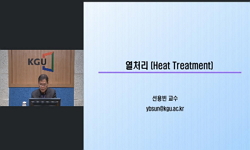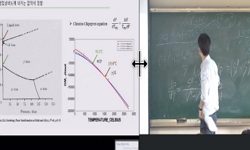Due to unique property of superelasticity, NiTi has been used widely since their introduction to the orthodontic specialty by Andreasen and Hillmann. But sufficent evaluation of superelasticity of domestic marketed wires has not yet been made. It has ...
http://chineseinput.net/에서 pinyin(병음)방식으로 중국어를 변환할 수 있습니다.
변환된 중국어를 복사하여 사용하시면 됩니다.
- 中文 을 입력하시려면 zhongwen을 입력하시고 space를누르시면됩니다.
- 北京 을 입력하시려면 beijing을 입력하시고 space를 누르시면 됩니다.

치과교정용 NiTi 합금계 선재의 탄성과 상변태 거동에 대한 열처리 효과 = The Effect of Heat Treatment for Elasticity and Phase Transition Behavior of Orthodontic NiTi Alloy Wires
한글로보기https://www.riss.kr/link?id=A1989443
- 저자
- 발행기관
- 학술지명
- 권호사항
-
발행연도
1997
-
작성언어
Korean
- 주제어
-
KDC
515.12
-
등재정보
KCI등재
-
자료형태
학술저널
- 발행기관 URL
-
수록면
7-21(15쪽)
- 제공처
- 소장기관
-
0
상세조회 -
0
다운로드
부가정보
다국어 초록 (Multilingual Abstract)
Due to unique property of superelasticity, NiTi has been used widely since their introduction to the orthodontic specialty by Andreasen and Hillmann. But sufficent evaluation of superelasticity of domestic marketed wires has not yet been made. It has been known that heat treatment caused changes not only of elastic behavior but also of phase transformation behavior, an important factor of superelasticity. So, this study was investigated into varied ways of heat treatment of wires for orthodontic force proper for each clinical case. Each elastic behavior of 6 commercial NiTi alloy orthodontic arch wires(LG's ORTHOLLOY, G & H's Nickel Titanium arch wire, ORMCO's NI-TI and COPPER NI-TI, TOMY's SENTALLOY and 3M Unitek's Nitinol) were examined, and in order to study the effect of heat treatment on elasticity and phase transformation behavior, 3-point bending test, differential scanning calorimetry and X-ray diffraction with each wire heated at 350℃, 450℃ and 550℃ for 1hour were carried out compared with a as-recieved group.
The results were as follows :
1. As a result of 3-point bending test in a control group, all wires had superelasticity and COPPER NI-TI showed the lowest maximum load as well as minimum(P<0.05).
2. As a result of 3-point bending est, except Nitinol and COPPER NI-TI, the wires in the group heated at 450℃ had lowest maximum and minimum load than that of a control group, and higher maximum and minimum load that of COPPER NI-TI in
control group, and had superelasticity without and permanent deformation(P<0.05).
3. Phase transition temperature of all wires heated at 350℃ except COPPER NI-TI
became higher but it became lower when they were heated at 450℃ and 550℃.
4. All wires in control group had austenite structure and when they were heated,
martensite phase increased, and R phase appeared when heated at 550℃.
The wires used in this study were changed in phase transition temperature, structure and elastic behavior as well by heat treatment. So this study showed that even the same kind of wire could be varied and used after heat treated, choosing proper load in accordance with each orthodontic clinic case.
목차 (Table of Contents)
- Ⅰ. 서 론
- Ⅱ. 연구재료 및 방법
- Ⅲ. 연구성적
- Ⅳ. 총괄 및 고찰
- Ⅴ. 결 론
- Ⅰ. 서 론
- Ⅱ. 연구재료 및 방법
- Ⅲ. 연구성적
- Ⅳ. 총괄 및 고찰
- Ⅴ. 결 론
- 참고문헌
- 영문초록
동일학술지(권/호) 다른 논문
-
- 대한치과기재학회
- 김철위
- 1997
- KCI등재
-
- 대한치과기재학회
- 임범순
- 1997
- KCI등재
-
레진재료의 결합을 위한 복합레진 수복물의 최적표면처리법에 관한 연구
- 대한치과기재학회
- 임호남
- 1997
- KCI등재
-
- 대한치과기재학회
- 김교한
- 1997
- KCI등재




 RISS
RISS DBpia
DBpia




